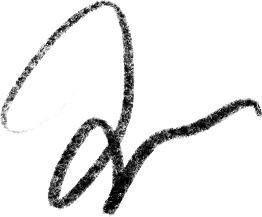Glossary

A
Afro-Germans
People of African and German descent who were residents of Germany. In the Nazi era, Afro-Germans were targeted by Nazis because they were seen to threaten the “purity” of the German race. Hundreds of Afro-Germans were isolated, persecuted and murdered.
Allied Forces
The countries that fought in World War II against Germany and its allies. The alliance of 26 nations, including Canada, was led by Britain, the Soviet Union and the United States.
American Jewish Joint Distribution Committee (JDC)
A charitable organization founded in 1914 to provide humanitarian assistance and relief to Jews all over the world in times of crisis.
antisemitism
Prejudice, discrimination, persecution or hatred against Jewish people, institutions, culture and symbols.
Arrow Cross Party
A radical political party that took control of Hungary from October 1944 to March 1945. The Arrow Cross government confined approximately 70,000 Jews in a ghetto in Budapest and murdered tens of thousands of others.
Aryan
A term used by Nazis and in Nazi racial law to refer to someone with “pure” Germanic blood, as opposed to “non-Aryans,” such as Jews, Roma, and others they believed to be racially inferior.
C
camps
Sites set up by Nazi Germany to confine, murder and exploit the labour of Jews and other persecuted groups. Camp inmates were confined under brutal conditions, and most of them died of starvation, disease, violence or organized killings.
Canadian Jewish Congress (CJC)
An organization founded in 1919 to promote the interests and rights of the Canadian Jewish community.
cheder
A traditional Jewish elementary school in which religious studies and the Hebrew language are taught.
Chumash
The first five books of the Hebrew Bible, or Torah, also known as the Old Testament.
Council of Elders
Jewish councils or councils of elders were set up by the Nazis to enforce their commands in ghettos, where Jews were segregated from the non-Jewish population. These community leaders often tried to provide Jews with basic community services.
crematoria
Buildings where corpses are burned. The Nazis used crematoria to burn the bodies of Jews and other prisoners they murdered in concentration camps, as well as in the Auschwitz-Birkenau killing centre, where the crematoria also housed gas chambers.
D
displaced persons (DP) camps
Centres that were set up by the Allied forces and the UNRRA after World War II to provide refugees with a place to live while they prepared for resettlement. After the war, there were more than 250,000 Jewish displaced persons in Europe.
dysentery
An illness caused by poor sanitation conditions that affects the intestinal tract. Dysentery was a common illness in the camps and ghettos during World War II.
F
Free Zone
The southern part of France that remained independent after the northern part of France was occupied by Germany in 1940, until it too was occupied in late 1942. The French government collaborated with the German occupiers and carried out its own anti-Jewish measures.
Führer
“Leader” in German. In Nazi Germany, Adolf Hitler was referred to as “the Führer,” a way of emphasizing belief in him as a leader who represented the people’s will and should be supported without question.
G
gas chambers
Sealed rooms into which poisonous gasses were released to kill people. The Nazis began using gas to kill people with disabilities in 1939. They later built gas chambers in killing centres and camps to murder Jews and others.
gentile
Non-Jewish person.
German Reich
A German word meaning empire or realm. The term “Third Reich” is often used to refer to Germany under Nazi control from 1933 to 1945. The Nazis believed that they would rule a “Thousand-Year Reich” in Germany.
Gestapo
One of Nazi Germany’s police forces that was responsible for rounding up Jews in German-controlled areas and sending them to concentration camps and killing centres. They also arrested, tortured and deported those who resisted Nazi policies.
ghettos
Areas of cities and towns in Eastern Europe where Jews were confined during the Holocaust, segregated from the rest of the population. Jews lived in these overcrowded and unsanitary ghettos until they were sent to do forced labour or be killed.
Goebbels, Joseph
One of Adolf Hitler’s most committed followers. In 1933, Goebbels was appointed to be the government minister in charge of spreading Nazi views throughout Germany. He was a vicious antisemite and organized brutal attacks against German Jews.
Gymnasium
A word used throughout Central and Eastern Europe to mean high school or secondary school.
H
Hebrew
The language of Middle Eastern origin that was spoken by the ancient Israelites and is the language of Jewish prayer and texts. Hebrew was revived as a spoken language in the nineteenth century and is the official language of Israel.
Hitler Youth
An organization founded in the 1920s in Germany to teach teenage boys Nazi beliefs. A parallel organization, the League of German Girls, was created for girls. By 1939, all German youth aged 10–18 were required to join these organizations.
Hitler, Adolf
The head of the Nazi Party and leader of Germany from 1933–1945. Hitler established a dictatorship and called himself the “Führer” (leader). His views that Germans were a superior race and that Jews and other groups were inferior was a core belief of the Nazis and led to World War II and the Holocaust.
J
Jehovah’s Witnesses
A Christian group that was persecuted by the Nazis because they refused to join the Nazi Party, follow Nazi rules or join the army. During the Holocaust, approximately 3,000 Jehovah’s Witnesses were sent to concentration camps, where many were murdered.
the Jewish question (the Jewish problem)
The phrase used to question the status of Jews in Europe as they gained more rights in the 1800s. Antisemitic thinkers saw the Jews’ presence in Europe as a problem, and the Nazis’ “solution” was to kill the Jews of Europe during the Holocaust.
K
killing centres
Nazi camps built during the Holocaust for the purpose of murdering Jews on a mass scale, using poisonous gas. They were also called death camps. Nearly 2,700,000 Jews were murdered in killing centres during the Holocaust.
Kommandant
The chief commander of a Nazi concentration camp, where Jews and others persecuted by the Nazis were confined under brutal conditions.
L
League of Nations
An international organization established in 1919 to maintain peace and security after World War I. It was officially dissolved in 1946 and replaced by the United Nations.
M
munitions factory
A factory where military equipment and supplies are made. During World War II, many forced labourers were required to work in munitions factories, often in dangerous conditions.
N
Nazi Party
The National Socialist German Workers’ Party, a far-right antisemitic political party established in 1920 in Germany. Under the leadership of Adolf Hitler, the Nazi Party controlled Germany from 1933 to 1945.
Nazi salute
A gesture that Germans were required to make when greeting others in Nazi Germany, showing loyalty to Adolf Hitler. The salute was often accompanied by a verbal greeting of “Heil Hitler” (Hail, Hitler). It was also used in public events.
Nazis
Members of the National Socialist German Workers’ Party, or Nazi Party, and those who supported and carried out and its far-right, antisemitic policies. The Nazis’ influence grew under the leadership of Adolf Hitler, and they controlled Germany from 1933 to 1945.
Nuremberg Laws
Two laws passed by the Nazis in September 1935 based on their theories about race. The laws stripped Jews of their citizenship, defined who was Jewish and limited relationships between Jews and “Aryans,” or “pure” Germans, according to Nazi beliefs.
O
Œuvre de secours aux enfants (OSE)
(Children’s Relief Agency) An international Jewish organization that provided health and welfare services to Jews. During the Holocaust, it established a secret rescue network in France and saved thousands of Jewish children.
Old Testament
The first five books of the Hebrew Bible (the Torah), considered in Jewish tradition to contain God’s revelation and teachings to the Jewish people.
Organization for Rehabilitation through Training (ORT)
An organization that brings professional training programs to Jewish communities across the world. After World War II, ORT established schools and training programs that served survivors in displaced persons camps in Germany, Austria and Italy.
Orthodox
The religious practice of some Jews that is characterized by strictly following Jewish laws and traditions, like not working on the Sabbath and keeping certain dietary restrictions.
P
People of the Book
A term sometimes used to refer to the Jewish people, who have historically had a deep love and respect for books and learning.
R
race laws of 1935
Two laws passed by the Nazis in September 1935 based on their theories about race. The laws stripped Jews of their citizenship, defined who was Jewish and limited relationships between Jews and “Aryans,” or “pure” Germans, according to Nazi beliefs.
Ringelblum archive
An archive created by Jewish historian Emanuel Ringelblum and others to document daily life and Nazi persecution in the Warsaw ghetto. The collection was buried underground before the ghetto was destroyed and partially recovered after the war.
Roma
A traditionally nomadic ethnic group (historically called “Gypsies”) mostly located in Europe. Like Jews, they were targeted by the Nazis on so-called racial grounds, and between 220,000 and 500,000 Roma were murdered by the Nazis and their collaborators.
rosary
A string of beads used to keep count while uttering the Rosary, a set of prayers and meditations in Roman Catholic practice.
S
SS
The elite police force of the Nazi regime responsible for security and for the enforcement of Nazi policies, including the murder of Europe’s Jews. The SS ran the concentration camps and killing centres. SS is short for Schutzstaffel (Defence Corps).
Star of David
The six-pointed star that is the most recognizable symbol of Judaism. During the Holocaust, Jews were frequently forced to wear a Star of David badge or armband to single them out as targets for persecution.
swastika
An ancient symbol in the form of a cross with arms that are of equal length and bent at a right angle, used as the official symbol of the Nazi Party.
T
Talmud
A collection of ancient rabbinic teachings compiled between the third and sixth centuries that includes discussions of Jewish law in texts known as the Mishnah and the Gemara. The Talmud is the basis of traditional Jewish law and practice today.
Torah
The teachings of Judaism traditionally thought to have been given to the Jewish people through divine revelation. Also, the first five books of the Hebrew Bible known as the Five Books of Moses.
typhus
A contagious disease — transmitted by lice or fleas — that is characterized by headaches, fever, rashes and delirium. Typhus was very common in camps and ghettos during World War II.
U
United Nations General Assembly
One of six main bodies of the United Nations (UN), and the only one with all member states equally represented. It deliberates on global issues and sets policies aimed at promoting the values of the UN.
UNRRA (United Nations Relief and Rehabilitation Administration)
An international relief agency created at a 44-nation conference in 1943, to support those affected by World War II. It was especially active in supporting refugees in formerly Nazi-occupied European countries by providing health and welfare services.
Y
yellow star
The yellow badge in the form of a Star of David that many Jews in Nazi-occupied areas were forced to wear to single them out as targets for persecution. The Star of David, a six-pointed star, is the most recognizable symbol of Judaism.
yeshivas
Jewish educational institutions in which religious texts such as the Torah (the Hebrew Bible) and Talmud (ancient teachings about Jewish law) are studied.
Yiddish
The language spoken by most central and eastern European Jews before the Holocaust and still spoken in some Jewish communities. Yiddish is similar to contemporary German, with words from Hebrew and other languages, and is written in Hebrew characters.

